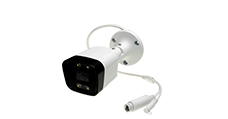1. Boot mode description¶
1.1. Preface¶
CT36L/CT36B is shipped with the Linux operating system installed by default.
CT36L/CT36B has flexible startup methods. Under normal circumstances, the CT36L/CT36B development board will not become bricked unless the hardware is damaged.
If an accident occurs during the upgrade process and the bootloader is damaged, making it impossible to re-upgrade, you can still enter MaskRom mode to repair it.
1.2. Firmware acquisition¶
CT36L Download link
CT36B Download link
1.3. Upgrade method¶
CT36L/CT36B supports firmware upgrade through the following two methods:
Use USB cable to upgrade firmware
Use CT36L/CT36B to connect the motherboard to the computer, and burn the firmware to the motherboard through the upgrade tool.Note 1:
SocToolKittool version 1.7 or higher is required to support the SD card upgrade boot function.Note 2: This function requires the user to run
SocToolKit.exeas an administrator (it will ask by default when opening the tool).Insert the successfully created SD card into the device and then restart. The device will enter the U-Boot terminal in the SD card first.
If the SD card has an upgrade function, the device will be automatically upgraded.
After the upgrade is completed, you need to remove the SD card and restart the device to enter the device system.
1.4. Start memory¶
CT36L loads the system from memory:
SPI FLASH interface
SDMMC interface
CT36B loads the system from memory:
EMMC interface
SDMMC interface
1.5. Startup mode¶
CT36L/CT36B has two startup modes:
Normal mode
MaskRom mode
1.5.1. Normal mode¶
Normal mode is the normal startup process. Each component is loaded in sequence and the system is entered normally.
1.5.2. MaskRom mode¶
MaskRom mode is used for firmware programming.
***To forcefully enter MaskRom mode, please refer to the chapter “MaskRom Mode”. ***
